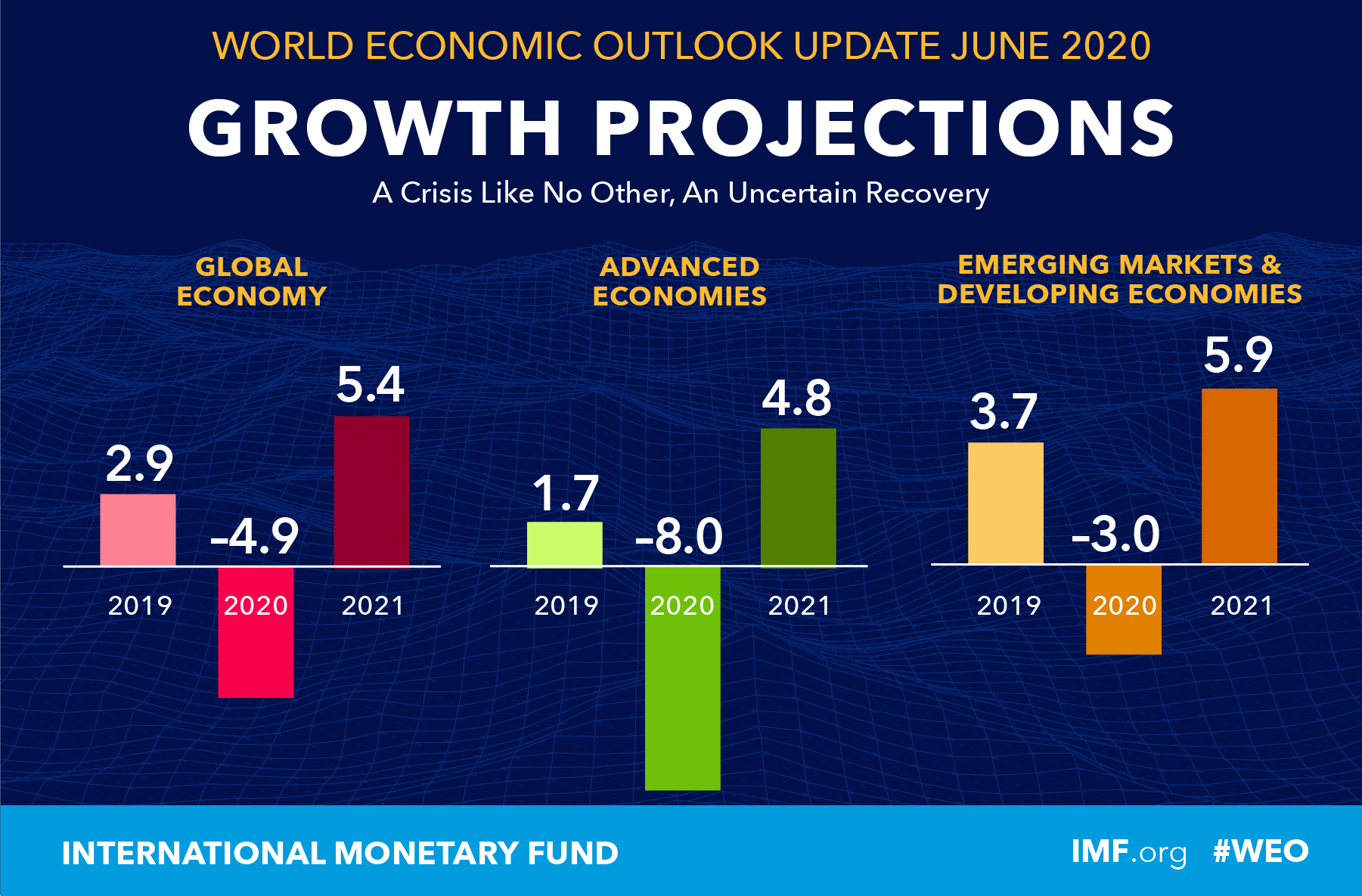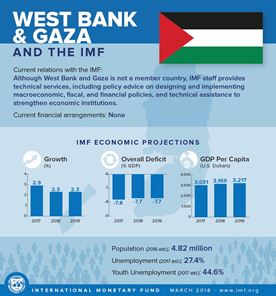Imf World Economic Outlook Update June 2020
2020 economic june8073 Views Watch the presentation on the global economic outlook update by Gita Gopinath. The recent incoming data suggests that the outlook may be somewhat less dire than at the time of the World Economic Outlook update on June 24 with parts of the global economy beginning to turn the corner said International Monetary Fund spokesman Gerry Rice.
 Ratings Agencies Korean Economy Relatively Stable Amid Covid 19 Korea Net The Official Website Of The Republic Of Korea
Ratings Agencies Korean Economy Relatively Stable Amid Covid 19 Korea Net The Official Website Of The Republic Of Korea
The months after the release of the June 2020 World Economic Outlook WEO Update have offered a glimpse of how difficult rekindling economic activity will be while the pandemic surges.

Imf world economic outlook update june 2020. The International Monetary Fund IMF in a June 2020 World Economic Outlook update has projected shrinking of the global economy by 49 per cent in 2020. Global Prospects and Policies Global Prospects and Policies. In our latest World Economic Outlook we continue to project a deep recession in 2020.
And a hit to productivity as surviving businesses ramp up necessary workplace safety and hygiene practices. Wednesday June 24 2020 900am ET. Wednesday in an update to the World Economic Outlook it released in April.
The forthcoming June World Economic Outlook Update is likely to show. A Crisis Like No Other An Uncertain Recovery June 24 2020 Description. World Economic Outlook June 2020 Update.
Compared to the October WEO forecast the estimate for 2019 and the projection for 2020 represent 01 percentage point reductions for each year while that for 2021 is 02 percentage point lower. In the October 2019 update IMF estimated that the US economy growth would be 21 during 2020. During May and June as many economies tentatively reopened from the Great Lockdown the global economy started to climb from the depths to which it had plunged in April.
For the first time since the Great Depression both advanced and emerging market economies will be in recession in 2020. Global growth is projected at 49 percent in 2020 19 percentage points below the April 2020 World Economic Outlook WEO forecast. The COVID-19 pandemic has had a more negative impact on activity in the first half of 2020 than anticipated and the recovery is projected to be more gradual than previously forecast.
Watch the Live Webcast and Read the REPORT on this page. Gian Maria Milesi-Ferretti Deputy Director IMF Research Dept. 10547 Views The COVID-19 pandemic has had a more negative impact than anticipated in the first half of 2020 and the recovery is projected to be more gradual amidst a lot of uncertainty.
The forecasts for 2019 and 2020 are 03 and 01 percentage point lower respectively than in April reflecting downward revisions in all major regions. June 24 2020 559 PM. Modest Pickup in 2020 Global growth estimated at 29 percent in 2019 is projected to increase to 33 percent in 2020 and inch up further to 34 percent in 2021.
6242020 World Economic Outlook Update June 2020. In the January 2020 update IMF estimated that the US real GDP growth would be 20. This is 19 per centage points below the IMFs April 2020 World Economic Outlook forecast.
WORLD ECONOMIC OUTLOOK UPDATE JUNE 2020. Greater scarring damage to supply potential from the larger-than-anticipated hit to activity during the lockdown in the first and second quarters of 2020. Malhar Nabar Division Chief IMF Research Dept.
In the June 2020 update IMF revised it down further to -80. In its updated forecast the IMF. The emerging market and developing economy group is expected to grow at 41 percent in 2019 rising to 47 percent in 2020.
The June 2020 WEO Updateprovides additional information on the economic forecast during the pandemic. The International Monetary Funds chief economist predicted a 49 percent decline in the global economy for 2020 down from the 3 percent the organization projected in April. Gita Gopinath IMF Economic Counsellor.
June 25 2020 0 149 Today the IMF released an extensive update to its April forecast incorporating substantial downward revisions to forecasted growth. In economies with declining infection rates the slower recovery path in the updated forecast reflects persistent social distancing into the second half of 2020. Rate or worse in the current April-June period.
World Economic Outlook Update June 2020. In the April 2020 IMF revised down the US GDP growth to -59. World Economic Outlook June 2020 Update.
What can countries do. Gita Gopinath Chief Economist Director Research Department IMF. Global growth is projected to be -44 percent an upward revision of 08 percentage points compared to our June update.
The World Economic Outlook WEO database contains selected macroeconomic data series from the statistical appendix of the World Economic Outlook report which presents the IMF staffs analysis and projections of economic developments at the global level in major country groups and in many individual countriesThe WEO is released in April and SeptemberOctober each year.





